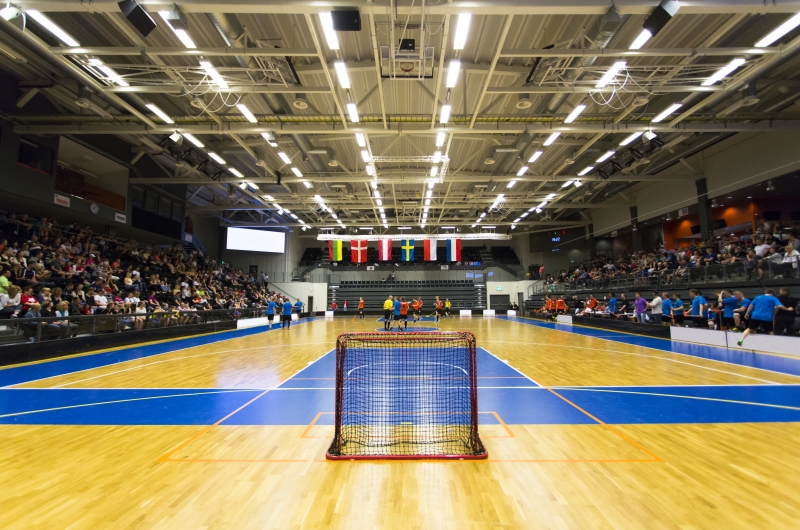The rapidly growing sport of Floorball is an indoor game that is fast-paced, with a lot of emphasis on skill and technique. Resembling hockey in style, the two teams of six compete over three periods, each lasting twenty minutes, using specialised light, carbon graphite sticks and a 23g plastic dimpled ball. The speed of Floorball makes for an excellent work-out.
Development

Having originally been a recreational sport in Canada, largely played in schools, it was not until the 1970’s in Sweden that the game became more developed. Now the sport is overseen by the International Floorball Federation (IFF), which currently has fifty eight members or provisional members, with countries from all across the world represented. Such is the development of the sport that bi-annual world cups are held, with the women’s version in 2015, to be hosted by Tampere in Finland. The men’s world cup in 2014 was in Gothenburg, and saw the host nation Sweden triumph in front of over 12,000 spectators.
Worldwide Game
As the sport develops on a world level, so it does at a regional one. The Australian Floorball Association, for example, incorporated in 1997, now has 1,568 registered players, and 27 clubs across the states. With competitions at national and local level, Australia has been represented at the World Cup, and also at the regional Asia Pacific championships. Clubs such as Packenham, Canberra and Glebe, all winners of the Australian Floorball Open tournament, help promote and develop the sport in their respective states and nationwide.
Olympic Recognition
In 2011 the sport of Floorball was recognised fully by the International Olympic Committee (IOC), having received provisional recognition in 2008. This is seen as a hugely important step to becoming a participant sport in the Olympic games, maybe as early as 2020, and the youth Olympics too. Such recognition, and the possible exposure of the sport to massive global audiences, has the potential to introduce Floorball to millions of people.